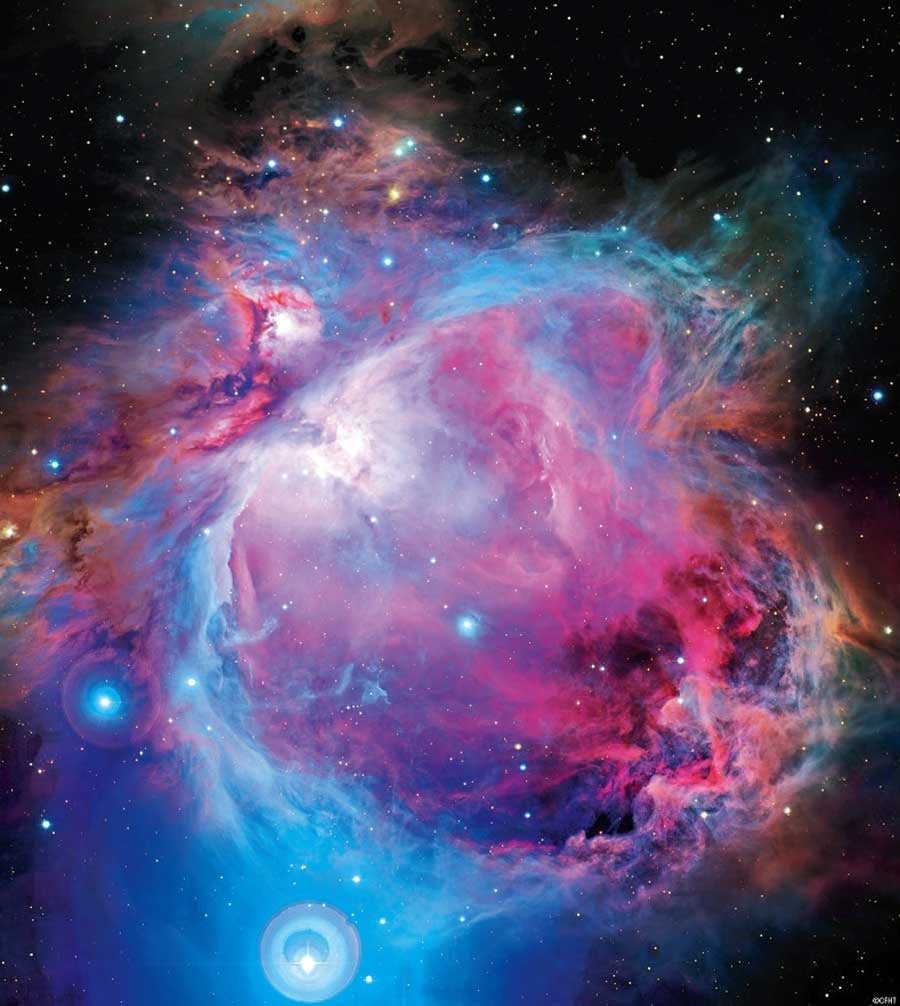But the dust is a problem, even in the darkest skies. Typically, stars near the zenith lose nearly 1 magnitude due to dust; that increases to 3 to 4 magnitudes at 15° altitude.
The rover cameras have sensitivities similar to the human eye (Opportunity’s Pancam can just pick out magnitude 6 or 7 red stars on a clear night, and Curiosity’s Mastcam can see magnitude 7 blue stars). That means only the brightest stars are visible at lower altitudes. The cameras’ low sensitivity — and the fact that they cannot move while exposing — means they can see only the brightest deep-sky objects.
The Andromeda Galaxy (M31) is the farthest object to be (barely) imaged; the Orion Nebula (M42) and the Magellanic Clouds are among the few visible deep-sky-objects. A pan-sky image would require about 150 images — over an hour — and one or two Mars days’ worth of the rover’s available bandwidth. So, targeted imaging always wins. In the future, perhaps a wide-angle or zoom camera will be able to accomplish a pan-sky image.
Texas A&M University
College Station










